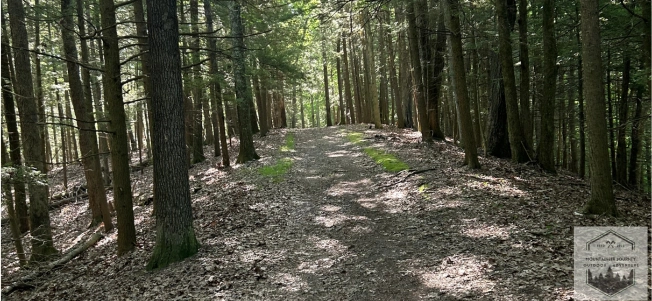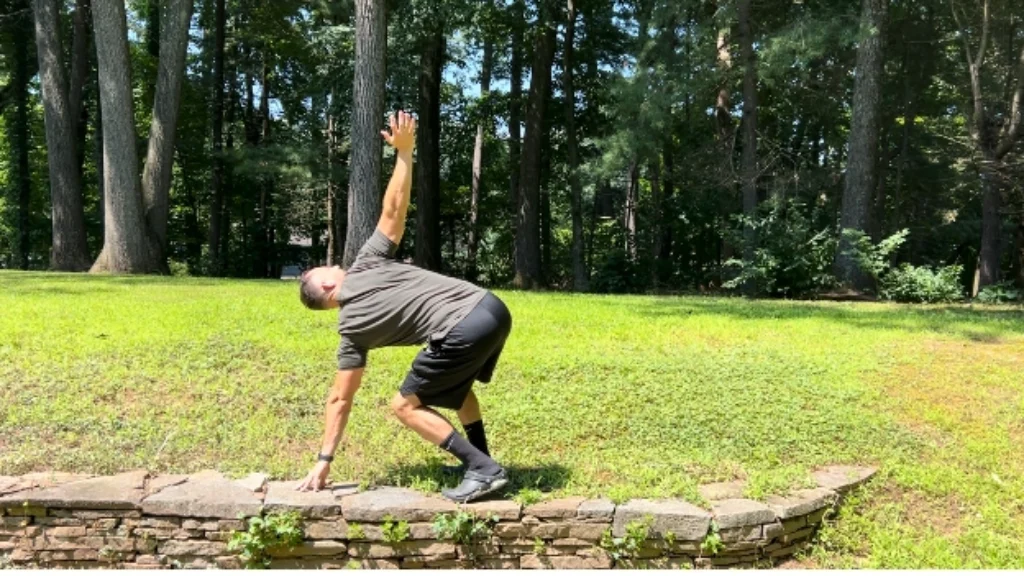How to Train for a Hike | Must-Read Tips and Exercises

How to train for a hike? to be physically ready for a hike this guide is essential as it gives you the critical advice and exercises to boost your strength, stamina and overall health. You will learn how to create a training schedule, warm up routines, strength training exercises and more to be able to tackle any hiking trail.
Editor’s Note: This post was updated on 5/19/25 with new exercises, and tips after personal experiences.
Key Takeaways
- Start your hiking training at least 6-8 weeks in advance, focusing on strength and cardiovascular fitness to enhance performance.
- Incorporate a variety of exercises like squats, lunges, and trail running to build core and leg strength, improve endurance, and avoid injuries.
- Prioritize mental preparation and recovery techniques, such as proper hydration, cooling down, and visualizing challenges, to fully prepare for the hiking experience.
How to Train for a Hike Essential Tips and Exercises

Before you start a training program consult with a doctor or fitness expert to make sure it’s suitable for you. To prepare for hiking an effective workout plan should be to boost stamina and fortify the body which helps in injury prevention and improve physical abilities.
It’s best to start your training 8 weeks prior to your hike to give time to build endurance and strengthen the muscles (for longer treks 10 miles +)
The core of any hiking focused workout plan is to focus on strengthening the core and leg muscles used during hikes or backpacking.
Strengthen these areas with exercises like jump squats, step-ups and side planks and also incorporate cardio activities like trail running or mountain biking which will overall condition your body.
Add cross training activities like cycling or swimming to your regimen. These will condition you while reducing stress on the muscles used in hiking.
Over time increase the intensity and duration of your workouts to continue to improve your fitness.

Training For A Long Hike
Starting a training program can be overwhelming especially if you’re new to hiking. But the journey to being trail ready is rewarding and physically and mentally.
A complete training program includes strength training, cardio, flexibility and mobility work. These will prepare your body to handle the demands of hiking from uneven terrain to carrying a loaded backpack.
Recovery techniques like cooling down after workouts and selecting the right gear are essential for a successful hiking trip experience. For example, my go-to hiking shoes for a small hike less than 5 miles are the Merrell Moab 3, while a 10 mile trek I will use my Hoka Kaha 2 GTX hiking boots.

Why Training for a Hike is Important
Training for a hike is important for both physical and mental preparedness. Physical training reduces injury risk, improves overall endurance, and enhances the enjoyment of the hike. Building strength beforehand is one of the best ways to prevent hiking-related injuries. We all know the power of stretching but always never engage in the proper stretches.
A well-structured workout plan should target core and leg muscles, crucial for hiking performance. Exercises like jump squats, step-ups, and side planks are particularly effective. Cardio activities such as trail running and mountain biking can also significantly boost hiking fitness.
Training for a hike provides significant advantages, ensuring you are both physically and mentally prepared for the challenge ahead. Finding a balance in your training routine is crucial; if something causes pain, make modifications to avoid injury. Preseason training prepares you for longer hikes and improves overall performance.Training for a hike is where the real fun—and preparation—begins. That preparation is just as important for your body as it is for your mind. Physical training slashes the risk of injury, boosts your endurance and—most importantly—enhances your enjoyment of the hike. Building strength beforehand is one of the best ways to prevent those hiking-related injuries that can really put a damper on your adventure.
We all know the importance of stretching, but we often don’t do it properly. Or consistently. That needs to change. A well-structured workout plan should target those core and leg muscles that are so crucial for hiking performance. Exercises like jump squats, step-ups and side planks are particularly effective at getting you ready. Cardio activities like trail running and mountain biking can give your hiking fitness a serious boost.
Training for a hike gives you a real edge. You’ll be both physically and mentally prepared for the challenge ahead. Finding that balance in your training routine is key. If something hurts, modify your routine to avoid injury. That preseason training will get you ready for those longer hikes and improve your overall performance.
Setting personal hiking objectives gives you a source of inspiration—and a clear direction for your training. Beginners to strength training should start with low-to-moderate intensity exercises to build a solid fitness base.
To keep you coming back for more, your workout routine needs to be both effective and enjoyable. That means mixing it up and keeping things interesting.
Setting Up Your Hiking Training Schedule

Setting personal hiking objectives gives you a source of inspiration—and a clear direction for your training. Beginners to strength training should start with low-to-moderate intensity exercises to build a solid fitness base.
To keep you coming back for more, your workout routine needs to be both effective and enjoyable. That means mixing it up and keeping things interesting.
Six to eight weeks before your big hike, start your training program. Organizing your training on a weekly basis lets you monitor your progress and fit in other obligations. When you’re designing your schedule, factor in both boosting your fitness level and pushing yourself beyond your comfort zone.
Adding some variety to your workouts keeps things fresh and stops you getting bored. Blending cardio, flexibility drills and strength-training sessions into a changing routine keeps you engaged—and dedicated to your goals.
Warm-Up Routines for Hikers
Before you hit the trail, it’s important to gently get your muscles and cardiovascular system ready for what’s to come. Aim for a 10-15 minute warm up to get circulation going and minimize injury risk.
Start with a 5-10 minute brisk walk to get your heart rate up and warm your muscles. Add in dynamic stretches like walking lunges or bringing your knees up towards your chest into your routine to improve circulation and flexibility.
Building Endurance for Long Hikes

Stamina is key for long hikes. Cardio exercises like swimming, brisk walking and running are essential in preparing for the demands of a hike. By gradually increasing the difficulty and length of your hikes you’re allowing your body to acclimate.
Hiking different terrain will help you prepare for unexpected trail scenarios. Doing activities you enjoy like trail running can help you become dedicated to fitness over time and aid in endurance development.
Conditioning with the same gear and hiking boots you’ll be using on your actual hike will help you get used to the fit and weight distribution – this will prevent discomfort or blisters by allowing your body to adjust beforehand.
First you need to know how long the hike you’re training for will be. If you’re training for a 15 mile hike with 1000 feet of elevation gain that’ll be different than a 3 mile loop around a neighborhood trail.
Strength Training for Hiking
Strength training is also important for preparing your body for hiking. You need to focus on the major muscle groups including legs, core and upper body. Strength exercises like squats, lunges and step ups are particularly helpful.
Lower body strength can be increased by doing jump squats which will build leg power for tackling steep inclines on a hike. To strengthen glutes and quads start with step ups with a 20 pound backpack. Then add 5 pounds each week to build more muscle.
To get ready for hiking do resistance training twice a week. Hiking with a weighted pack will improve endurance and strength so you’ll be ready for the actual challenges of the trail.Balance and stability on uneven terrain is dependent on core muscles and core strength. The obliques, glutes and legs are engaged in the side plank with leg raise which is a great way to work these areas. Varying planks will engage different core muscles so you’ll be working your core overall.
Doing the bridge exercise with a hamstring curl will target your hamstrings along with your core and glute muscles to improve balance and stability. Adding a leg raise to planks will increase endurance in the hip supporting muscles – a bonus when dealing with tough terrain.
Core Strength Exercises
Balance and stability on uneven terrain is all about core muscles and core strength. The obliques, glutes and legs are engaged in the side plank with leg raise which is a great way to work these areas. Variations of planks can engage different groups of core muscles and increase overall core strength.
Doing the bridge exercise with a hamstring curl will target your hamstrings and core and glutes to improve balance and stability. Adding a leg raise to plank exercises will increase endurance in the hip supporting muscles – a big advantage when dealing with rough terrain.
Flexibility and Mobility Workouts
Having full range of motion and moving well is key to preventing injuries and recovery, dynamic flexibility plays a big role – especially when hiking.
One way to increase mobility is the figure-4 exercise which targets hip flexion through multiple variations. The World’s Greatest Stretch is a comprehensive dynamic exercise that increases flexibility and mobility and prepares your body for the demands of hiking.
Exercises for hiking can really help. Doing hill repeats will increase heart and lung health, mimics the challenge of hiking a mountain. Working on climbing stairs will strengthen leg muscles and endurance for steep paths.
Trail running on different terrain will improve balance and agility for hikers. By incorporating hill repeats, stair workouts and trail running into your training you’ll be ready for the demands of the trails.
Adding stretching exercises to your cool down or while watching TV will help reduce muscle tension and bring your body back to normal state and prevent soreness after exercise.
Doing yoga, foam rolling and various types of self or assisted bodywork is good for recovery. Proper hydration and nutrition after a hike will aid in recovery.
Taking rest days is important not only for muscle recovery but also for preventing overuse injuries – preparing you for your next adventure.
Specific Hiking Exercises
Exercises for hiking can make you a better hiker. Hill repeats can improve heart and lung health, mimicking the demands of hiking a mountain. Stair work strengthens leg muscles and endurance for inclines.
Trail running on different terrain improves balance and agility for hikers. By incorporating hill repeats, stair work and trail running into your training you’ll be ready for tough trails.
Cooling Down and Recovery
Stretching exercises during cool down or while watching TV can help reduce muscle tension and bring your body back to normal so you won’t feel sore after exercise.
Yoga, foam rolling and various types of self or assisted bodywork are good for recovery. Proper hydration and nutrition after a hike helps with recovery.
Taking rest days is not only for muscle recovery but also for preventing overuse injuries—preparing you for your next adventure.
Preparing for High-Elevation Hikes
To prevent altitude sickness on high elevation hikes, you need to allow for gradual acclimatization. When you’re above 8,200 feet, elevation gain should be slow—1,000-1,600 feet a day is good for this.
Maintaining energy during training hikes is key and can be done through proper hydration and nutrition. High fluid intake is important as it counteracts the dehydrating effects of high altitude.

Mental Preparation for Hiking
Building confidence and navigating tough conditions on the trail requires mental toughness. Doing daily challenges like cold showers can be a great way to develop this.
Mental resilience is boosted by anticipating not only the good parts of your hike but also preparing for the obstacles you may face. Strengthening your core through specific exercises increases endurance which is important for long hikes and contributes to mental strength.
How to Fit Training into a Busy Schedule
Managing full time work, family and training can be a juggling act. Training 5 days a week helps with progress and consistency in your routine.
The key to success is to create a realistic training plan. Prioritise workouts that use your time efficiently and vary your exercise to keep you motivated. Strengthen your shoulders and lower back to prepare for long days of hiking.
Choosing the Right Gear for Training
Getting the right equipment is key to training. It’s important to support and stabilise your feet and ankles when hiking which can be done by wearing the right shoes. Get expert fitting when buying hiking boots and you’ll get the perfect fit.
When training at home have dumbbells, resistance bands and trail shoes on hand. Get familiar with your hiking gear before you go hiking and you’ll know if it’s comfortable and practical for real hikes.
My Experience Training For Hiking
Embarking on a hike requires an all-encompassing training regimen that encompasses strength training, aerobic exercises, flexibility routines, and psychological readiness.
Personally, I still do many of the exercises and stretches as listed above after 15+ years of hiking and serving as a mountain guide. It is important to adhere to strict guidelines because they will serve you in the long run of hiking.
Frequently Asked Questions
When should I start training for a hike?
Begin your training 6 to 8 weeks before your hike to establish a robust fitness base and make certain you’re prepared for the upcoming adventure!
What are some essential exercises for hiking preparation?
To enhance your hiking experience, concentrate on developing strength and stamina by engaging in exercises such as squats, lunges, and step-ups. Integrate cardio activities like trail running and mountain biking into your routine.
By doing so, you’ll ensure that your outdoor adventures are not only more pleasurable, but also demonstrate a notable improvement in physical endurance!
How can I prevent injuries while hiking?
To avoid sustaining injuries during your hiking adventures, it’s important to concentrate on building strength in both your core and leg muscles. Ensure you properly warm up before setting out on a hike and cool down once you’ve completed it.
Adopting this preventive strategy will enable you to traverse the trails with assurance!
How important is mental preparation for hiking?
Preparing mentally is crucial to enhancing confidence and fortifying mental toughness, which are key for a triumphant hike. My favorite mental exercise is to envision myself at the summit of the mountain knowing I had made it to the top without trouble.
Ready yourself to master the trail by imagining your journey ahead of time and accepting daily challenges with open arms!
What gear should I use for training?
Using proper footwear like hiking boots is crucial for training, along with equipment like dumbbells and resistance bands for home workouts.
Practicing in your hiking gear will prepare you for optimal comfort and performance on the trail!
What is the best exercise for hiking?
In our expert opinion there is not a single best exercise for hiking. Best Exercises for mountain hiking include: Jump squats and lunges, core strengthening exercises, and calve raises.
Adventure Awaits,
Tyler






